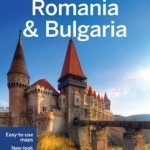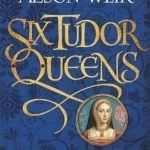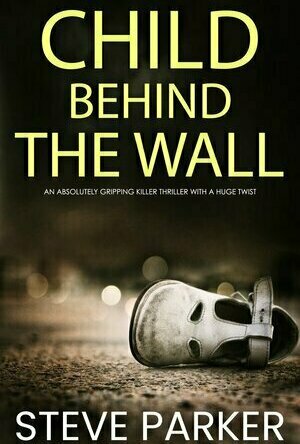
Lonely Planet Romania & Bulgaria
Lonely Planet, Mark Baker, Richard Waters and Chris Deliso
Book
Lonely Planet: The world's leading travel guide publisher Lonely Planet Romania & Bulgaria is your...

The Supply Chain Game Changers: Applications and Best Practices That are Shaping the Future of Supply Chain Management
Theodore (Ted) Stank, Michael H. Burnette, J. Paul Dittmann and Chad W. Autry
Book
BREAKTHROUGH BEST PRACTICES IN GLOBAL SUPPLY CHAIN MANAGEMENT FROM WORLD-CLASS PRACTITIONERS * For...

Six Tudor Queens: Katherine of Aragon, the True Queen: Six Tudor Queens 1
Book
*A Sunday Times Top Ten Bestseller* Katherine of Aragon: The True Queen by bestselling historian...

From the Fatherland with Love
Ryu Murakami, Charles De Wolf, Ralph McCarthy and Ginny Takemori
Book
An ambitious, epic dystopian novel - part political thriller and part satire. From the Fatherland,...
Kristy H (1252 KP) rated Party of Two (The Wedding Date #5) in Books
Feb 18, 2021
When Olivia Monroe randomly chats with a handsome stranger at a hotel bar, she has no idea that they will wind up making a lasting connection. After her chance encounter, she learns that man was no other than Max Powell, a hotshot junior senator from California, where Olivia has just moved to start her own law firm. Olivia is focused on her firm--and she has no desire to date someone well-known--but when she and Max meet again, and he then sends her a cake, she can't help but be charmed. She finds she really likes Max, but not the scrutiny that comes with dating a high-profile figure. Olivia knows she and Max have something special, but is it worth all the other stuff?
This was my first book by Jasmine Guillory, but it will certainly not be my last. I found PARTY to be completely charming. I had no idea it was the fifth book in a series, and I'll definitely be going back and catching up on the previous books. That being said, this one seems to stand-alone.
PARTY is one of those romance books that just sweeps you off your feet from the beginning. It's incredibly fun and sexy and made me smile while reading it. Oh how I needed a book that made me smile. Olivia is smart and easy to identify with: I have a soft spot for skeptical workaholics. She also loves cake, and there are so many references to baked goods in this book. I was truly in heaven! (And hungry.) Max is handsome and a bit too perfect, but, yes, you learn, he too has flaws. And honestly, I was quite protective of my Olivia, so I only wanted the best for her anyway.
So sure, maybe this is a little predictable, but who cares, because it's so fun, and it made me laugh and tear up. Our couple is adorable, and the supporting cast is excellent (and, as far as I can tell, links to other books). I liked the references to politics and adored any and all mention of sweets. The book also touches on racism and the issues plaguing working women, so it's not just fluff. Overall, I loved basically every moment, and I can't wait to read the copy of THE WEDDING DATE I immediately bought upon finishing this book. 4.5 stars.
Illeana Douglas recommended Ride the Pink Horse (1947) in Movies (curated)
Hazel (2934 KP) rated Child Behind The Wall in Books
Sep 19, 2020
On his website, Mr Parker describes "My style of writing is hard-hitting, fast-paced, violent and carry moral messages that you might have to dig a bit deeper for. I try not to use more words than is necessary although more than a few of them are of the swearing variety. Hey! People swear. And they swear a ******* lot in my world. I will unashamedly tackle issues where some writers fear to tread." I would say this is a pretty accurate reflection - this book is not for the feint-hearted; it contains bad language and graphic scenes which leave nothing to the imagination so be warned!
This is a fast-paced, action packed read from the first to the last page with twists and turns and shocks along the way. The characters are an interesting and eclectic bunch with the 2 main protagonists of Paterson and Clocks being, what I would describe, an acquired taste - Mr Parker advises that they are based loosely on characters he has known throughout his 20 year career in the Police ... all I can say is that if I knew Clocks in particular, I would have probably disliked him intensely on first impression however, I can see a very loyal friend who would do anything for you plus there is definitely a troubled softie in there. Having said that, I still found him annoying!
The main plot is hard-hitting and totally gripping - there is some humour interspersed throughout which did provide some much needed lighter moments. The sub-plots are intriguing and an interesting insight into the politics within the various echelons within the Police; these, I assume, are linked to previous cases covered in earlier books in the series. Like I said, I haven't read any of the others but didn't find this too confusing but I do think I was missing the backstory somewhat which probably impacted on my overall enjoyment of the story as a whole but this is my fault rather than the fault of the author.
This is a no-holds-barred, gritty thriller that I would recommend to any who enjoy the harsher stories dealing with horrific crimes but, as I have said, it does contain gruesome details of crimes against children so if this isn't your preference, then I wouldn't go there but you will be missing out on a really excellent book.
Many thanks go to Joffe Books via NetGalley for my copy in return for an honest, unbiased and unedited review.

The Economist Espresso
News
App
• A morning briefing from the editors of The Economist • Brand new content delivered 6 days a...




